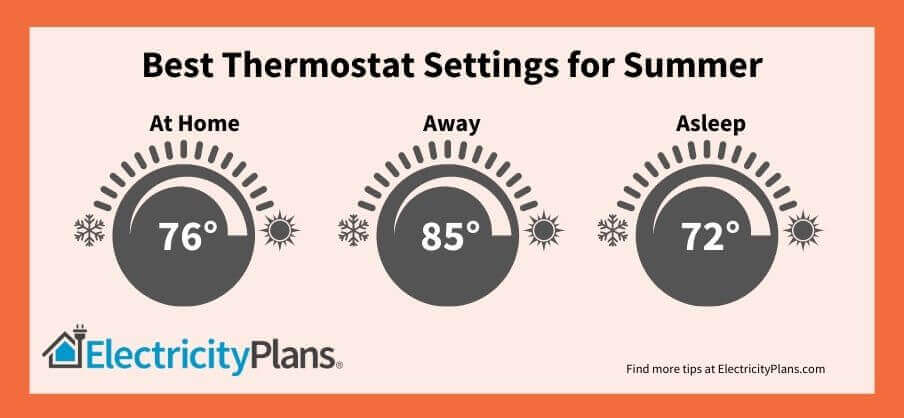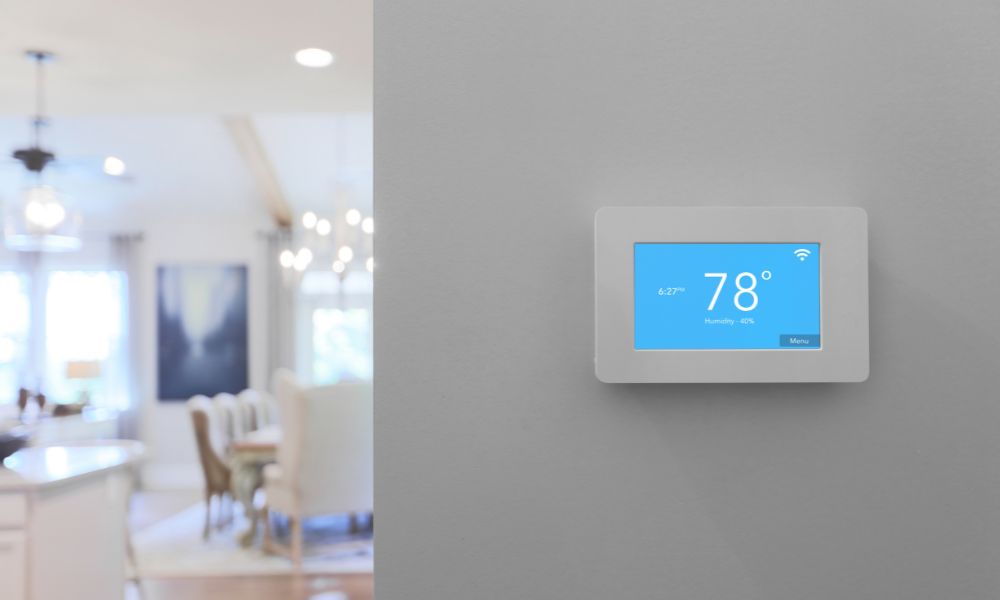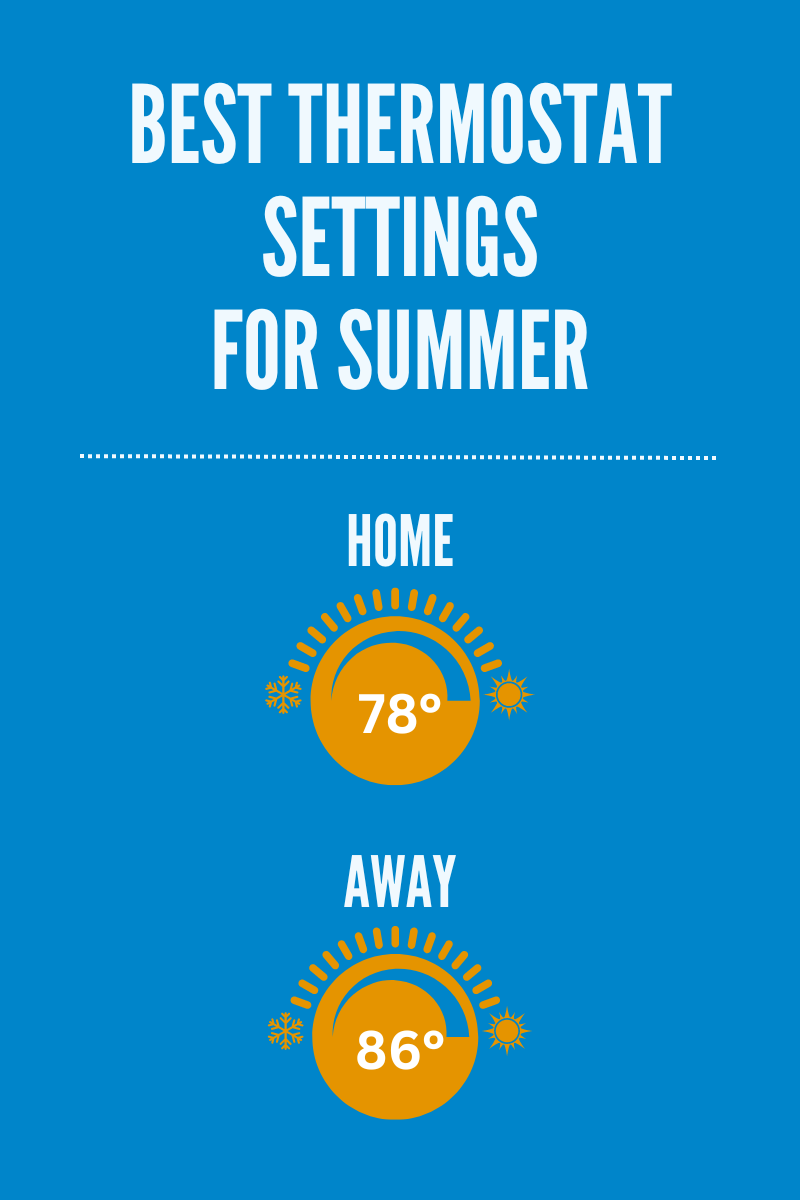Check Best Thermostat Pricing in Amazon
** As an Amazon Associate, I earn from qualifying purchases.
Are you wondering what to set your thermostat to when you’re away from home? It’s a simple question, but the answer can save you money and keep your house safe.
Setting your thermostat just right can lower energy bills without risking damage to your home. You’ll discover the best temperature settings for different seasons and how small changes can make a big difference. Keep reading to find out how to protect your comfort and your wallet while you’re not at home.
Ideal Thermostat Settings
Setting the thermostat correctly while away saves energy and money. Ideal settings keep your home safe and comfortable. These settings depend on the season and your home’s needs.
Choosing the right temperature protects your pipes in winter and prevents excess cooling in summer. It also reduces your utility bills. Let’s explore the best temperatures for each season.
Temperature For Summer
In summer, set the thermostat higher than usual. Around 78°F (25.5°C) is good. This temperature keeps the house warm but saves energy. It stops the air conditioner from running too much.
If it gets very hot, you can lower it a bit. But avoid setting it too low. This wastes electricity and raises your bill.
Temperature For Winter
In winter, set the thermostat lower than normal. About 55°F to 60°F (13°C to 16°C) works well. This prevents pipes from freezing and keeps your home from getting too cold.
Lowering the heat while away saves energy. It also stops your heating system from running constantly. You can increase the temperature before you return.

Credit: electricityplans.com
Energy Savings Tips
Saving energy while you are away helps reduce bills and protects the environment. Setting your thermostat properly is a simple way to cut energy use. Small changes can make a big difference in comfort and cost.
Using Programmable Thermostats
Programmable thermostats let you set temperatures for different times. You can lower the heat or cooling when no one is home. Then, the thermostat returns to normal before you arrive. This stops energy waste during empty hours.
Set the thermostat about 7-10 degrees lower in winter and higher in summer. This adjustment saves energy without risking damage to your home. Many models are easy to use and fit most heating systems.
Smart Thermostat Features
Smart thermostats adjust automatically based on your schedule and habits. They learn your routines and change temperatures to save energy. Some connect to your phone for remote control.
They also detect when windows are open or rooms are empty. This prevents heating or cooling unused spaces. Using smart features can lead to steady savings without effort.
Factors Affecting Thermostat Settings
Setting the thermostat while away depends on several important factors. These factors help save energy and protect your home. Understanding them can guide you to the best temperature settings. Let’s explore the main factors that affect your thermostat choices.
Home Insulation
Good insulation keeps your home warm or cool longer. It reduces the need to heat or cool the house constantly. Well-insulated homes can have wider temperature ranges when away. Poor insulation means you should keep the thermostat closer to normal. This prevents pipes from freezing or extreme heat damage.
Local Climate
The weather outside plays a big role in thermostat settings. Cold climates need warmer settings to stop pipes from freezing. Hot climates require cooler settings to avoid heat damage. Mild climates allow more flexibility with temperature changes. Check your local weather patterns before setting the thermostat.
Check Best Thermostat Pricing in Amazon
** As an Amazon Associate, I earn from qualifying purchases.
Duration Of Absence
How long you will be away matters a lot. Short trips need smaller thermostat adjustments. Longer absences allow for bigger temperature changes to save energy. For very long trips, setting the thermostat to an energy-saving mode works best. Always consider house safety and comfort for pets or plants.

Credit: www.pioneerminisplit.com
Avoiding Common Mistakes
Setting your thermostat while away might seem simple. Many make mistakes that waste energy or cause damage. Avoid these common errors to save money and keep your home safe. Small changes can make a big difference in comfort and cost.
Setting Too Low Or High
Some set the temperature too low in winter or too high in summer. This makes the system work harder when you return. It uses more energy and raises bills. Choose a moderate setting that protects pipes and prevents overheating.
Ignoring Humidity Control
Humidity affects comfort and home health. Too much moisture can cause mold and damage. Too little makes the air dry and uncomfortable. Use a thermostat with humidity control or add a humidifier or dehumidifier. Keep humidity balanced for better air quality.
Seasonal Adjustments
Adjusting your thermostat settings based on the season can save energy and keep your home comfortable. Different times of the year need different temperature settings, especially when you are away. Small changes can reduce your energy bills and protect your home.
Spring And Fall Settings
Spring and fall have mild temperatures. Set your thermostat higher than usual in spring. Around 78°F (25°C) works well. In fall, keep it lower, about 62°F (17°C). These settings avoid heating or cooling waste. Your home stays safe from extreme cold or heat. It also helps your HVAC system last longer.
Holiday Periods
During holidays, your home stays empty for days. Lower your heating to around 55°F (13°C) in winter. Raise cooling to 85°F (29°C) in summer. These settings prevent energy waste while protecting pipes and furniture. You save money without risking damage. Use a programmable thermostat to automate these changes. It makes managing your home easier and smarter.

Credit: www.scanaenergy.com
Frequently Asked Questions
What Is The Ideal Thermostat Setting When Away?
Set your thermostat to 55-60°F in winter and 78-85°F in summer. This saves energy and prevents damage from extreme temperatures.
How Does Thermostat Setting Impact Energy Bills When Away?
A higher or lower thermostat setting reduces HVAC usage. This lowers energy consumption and cuts your utility bills effectively.
Should I Turn Off My Thermostat Completely When Away?
Turning off your thermostat can cause pipes to freeze in winter. It’s better to set it to an energy-saving temperature instead.
How Long Can I Leave My Thermostat Set Away?
You can leave it set this way for days or weeks. Just ensure the temperature prevents damage and maintains basic comfort.
Conclusion
Setting your thermostat right saves energy and money. Choose a temperature that protects your home but uses less power. Avoid extreme heat or cold to keep pipes safe and your house comfortable. Use a programmable thermostat to adjust settings easily.
Small changes add up to big savings over time. Keep your home safe and your bills low while you are away. Simple steps make a big difference for your comfort and budget.
Check Best Thermostat Pricing in Amazon
** As an Amazon Associate, I earn from qualifying purchases.

